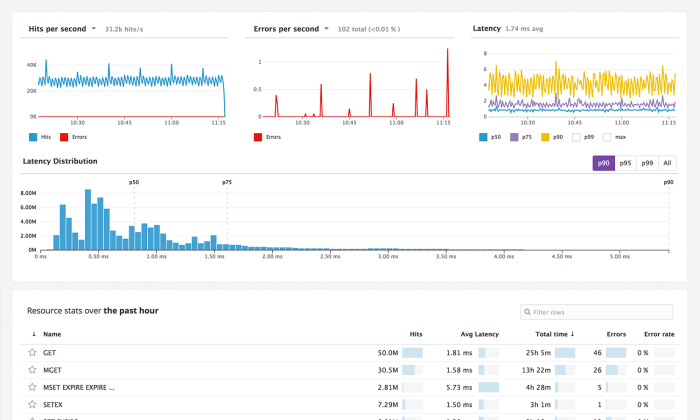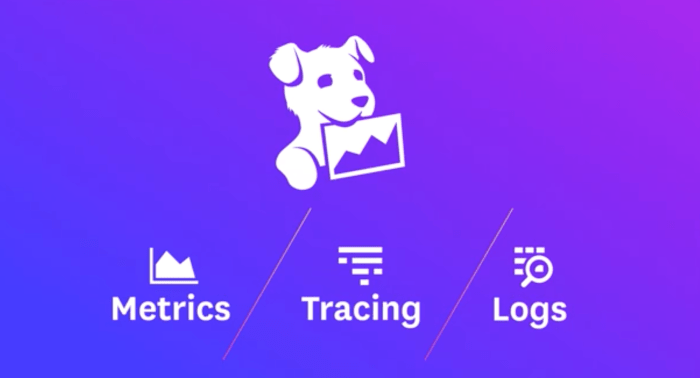Datadog Software Composition Analysis offers a powerful approach to understanding and managing the complexities of modern software development. By providing comprehensive insights into the components used in your applications, Datadog helps organizations identify vulnerabilities, manage licenses, and ensure compliance. This analysis goes beyond simple dependency scanning, providing a detailed picture of your software’s building blocks and their potential risks.
Understanding this information allows for proactive mitigation of security threats and improved software quality.
This detailed analysis allows developers and security teams to identify outdated or vulnerable components, understand the licensing implications of their software stack, and ultimately build more secure and reliable applications. The platform’s intuitive interface and reporting features make it accessible to a wide range of users, from developers to security professionals.
In today’s rapidly evolving software landscape, ensuring the security and reliability of applications is paramount. Software Composition Analysis (SCA) has emerged as a crucial element in achieving this goal. Datadog’s SCA solution provides a powerful and integrated approach to identifying and mitigating vulnerabilities within your software’s dependency tree. This comprehensive guide delves into the intricacies of Datadog SCA, explaining its features, benefits, and how it can significantly enhance your security posture.
Understanding Software Composition Analysis (SCA)
Software Composition Analysis (SCA) is a critical security practice that automatically identifies all open-source and third-party components within your applications. It goes beyond simply listing dependencies; SCA tools analyze these components to detect known vulnerabilities, licensing issues, and security risks. This proactive approach allows developers to address potential problems before they can be exploited by malicious actors or lead to compliance violations.
Key Aspects of SCA:, Datadog software composition analysis
- Dependency Mapping: SCA tools create a comprehensive map of all direct and transitive dependencies, providing a clear picture of your software’s composition.
- Vulnerability Detection: They scan these dependencies against known vulnerability databases (like the National Vulnerability Database – NVD) to identify potential security flaws.
- License Compliance: SCA helps ensure compliance with open-source licenses, preventing legal issues associated with using improperly licensed software.
- Risk Assessment: By prioritizing vulnerabilities based on severity and impact, SCA enables developers to focus their remediation efforts on the most critical issues.
Datadog’s Approach to Software Composition Analysis
Datadog’s SCA seamlessly integrates with its broader security and monitoring platform, offering a unified view of your application’s security posture. This integration allows for efficient correlation of security findings with other performance and operational data, enabling faster and more informed decision-making.
Key Features of Datadog SCA:
- Automated Dependency Scanning: Datadog automatically scans your code repositories and container images to identify all dependencies.
- Real-time Vulnerability Detection: It continuously monitors for new vulnerabilities and provides real-time alerts, ensuring you’re always aware of potential risks.
- Comprehensive Vulnerability Database: Datadog leverages multiple vulnerability databases, ensuring broad coverage and accurate identification of known threats.
- Detailed Vulnerability Information: For each identified vulnerability, Datadog provides detailed information, including severity level, CVSS score, remediation advice, and potential impact.
- Integration with CI/CD Pipelines: Seamless integration with CI/CD pipelines enables early detection of vulnerabilities during the development process.
- Customizable Rules and Policies: Allows tailoring of the SCA process to meet specific organizational needs and security policies.
- Reporting and Dashboards: Provides customizable reports and dashboards to visualize security posture and track remediation progress.
- Collaboration and Workflow Integration: Facilitates collaboration among development and security teams through streamlined workflows and integrated communication tools.
Benefits of Using Datadog SCA
Implementing Datadog SCA offers numerous benefits, contributing to a more secure and robust software development lifecycle:
- Improved Security Posture: Proactively identifies and mitigates vulnerabilities before they can be exploited.
- Reduced Risk of Breaches: Minimizes the likelihood of security breaches caused by vulnerable dependencies.
- Enhanced Compliance: Helps ensure compliance with relevant security and licensing regulations.
- Faster Remediation: Provides timely alerts and detailed information to accelerate the remediation process.
- Cost Savings: Prevents costly security incidents and reduces the overall cost of software development.
- Improved Developer Productivity: Streamlines the security process, allowing developers to focus on building features rather than security audits.
- Better Collaboration: Fosters better collaboration between development and security teams.
Implementing Datadog SCA
Integrating Datadog SCA into your workflow is relatively straightforward. It typically involves configuring the Datadog agent to scan your repositories and integrating it with your CI/CD pipeline. Datadog provides comprehensive documentation and support to guide you through the process. The specific steps will vary depending on your environment and chosen integration methods. Consider factors such as your repository type (Git, SVN, etc.), your CI/CD tools (Jenkins, GitLab CI, etc.), and your existing security infrastructure.
Addressing Common Challenges with Datadog SCA: Datadog Software Composition Analysis
While Datadog SCA provides a robust solution, some challenges might arise during implementation and usage. These often involve managing false positives, dealing with legacy codebases, and integrating with existing security tools. Effective communication and collaboration between development and security teams are essential for overcoming these hurdles.
Frequently Asked Questions (FAQ)
- Q: What types of vulnerabilities does Datadog SCA detect?
A: Datadog SCA detects a wide range of vulnerabilities, including those related to code injection, cross-site scripting (XSS), SQL injection, and many others, drawing from various vulnerability databases.
- Q: Does Datadog SCA support all programming languages?
A: Datadog SCA supports a wide range of programming languages and package managers. Check Datadog’s official documentation for the most up-to-date list of supported languages and frameworks.
- Q: How does Datadog SCA integrate with my existing security tools?
A: Datadog SCA integrates with various security tools and platforms through APIs and other mechanisms. Consult Datadog’s documentation for specific integration details.
- Q: How much does Datadog SCA cost?
A: Pricing for Datadog SCA varies depending on your specific needs and usage. Contact Datadog sales for detailed pricing information.
- Q: What is the difference between Datadog SCA and other SCA tools?
A: Datadog SCA differentiates itself through its seamless integration with the broader Datadog platform, offering a unified view of security, performance, and operational data. This integration enables faster and more informed decision-making.
Conclusion
Datadog SCA is a powerful tool that can significantly enhance your software security posture. By proactively identifying and mitigating vulnerabilities, it reduces the risk of security breaches, improves compliance, and streamlines the software development lifecycle. Its seamless integration with the Datadog platform provides a unified view of your application’s security and performance, making it an invaluable asset for organizations of all sizes.
References
- Datadog Security Product Page
- National Vulnerability Database (NVD)
- Open Web Application Security Project (OWASP)
Call to Action
Ready to bolster your software security? Start your free trial of Datadog today and experience the power of integrated Software Composition Analysis!
In conclusion, Datadog Software Composition Analysis provides a crucial layer of security and insight into the software development lifecycle. By offering a clear and comprehensive view of application components and their associated risks, it empowers organizations to build more secure, compliant, and reliable software. The proactive identification of vulnerabilities and licensing issues allows for timely mitigation, reducing the risk of costly breaches and legal complications.
The platform’s ease of use and comprehensive reporting capabilities make it a valuable asset for any organization committed to software quality and security.
Essential Questionnaire
What types of vulnerabilities does Datadog SCA detect?
Datadog SCA detects a wide range of vulnerabilities, including those identified in the National Vulnerability Database (NVD), as well as known exploits and weaknesses in open-source libraries and dependencies.

Source: imgix.net
How does Datadog SCA integrate with my existing CI/CD pipeline?

Source: medium.com
Datadog SCA integrates seamlessly with various CI/CD platforms through APIs and plugins, allowing for automated security checks during the build and deployment process.
Is Datadog SCA suitable for both open-source and commercial components?
Yes, Datadog SCA analyzes both open-source and commercial components, providing a holistic view of your software’s composition and associated risks.
How does Datadog SCA handle license compliance?
Datadog SCA identifies licenses associated with each component, helping organizations ensure compliance with open-source licensing requirements and avoid potential legal issues.
